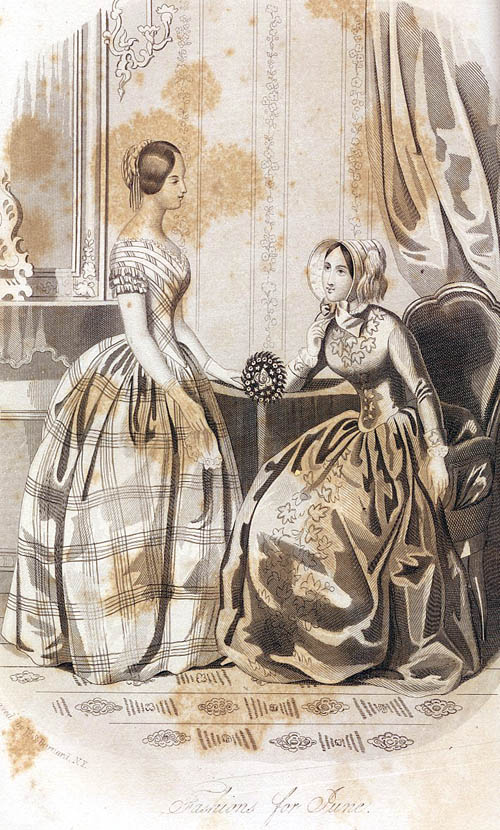Anesthesia in 1848
Today, anesthesia in 1848. The University of Houston's College of Engineering presents this series about the machines that make our civilization run, and the people whose ingenuity created them.
By 1848, the Columbian Magazine had become fare for women, served up by men -- a kind of Ladies Home Journal. Here, on one left-hand page is an anonymous poem, To a Pink Hyacinth. On the right, begins an article titled Recollections of a Physician. I'll spare you the poem, and go to the article.
The writer tells of being called to the home of Miss. E. Miss E. is nineteen, beautiful, intelligent, and she seems quite healthy. She seats him in the parlor to tell her story. A tumor on her shoulder has to be removed surgically -- and soon. Her fiancé is returning by steamer from Liverpool
However, she's told her regular doctor that she cannot face his knife; she wants chloroform. He's told her that chloroform is too dangerous. And he thinks she should be able to bear the pain. So she asks our writer for a second opinion. He supports her doctor. Chloroform is dangerous. Nervous and upset, she pays him "a generous fee," and sees him out. The matter appears to be closed.
Two items to think about here: First her fiancé's steamer: Steam-powered passenger ships are only ten years old, and they still carry sail. It is very new technology. I mention that because we're watching two new technologies changing everyday life.
Chloroform is even newer. It was synthesized seventeen years earlier, but first used as an anesthetic in Edinburgh, only the year before. After that it rapidly found its way into European medicine. The same year Miss E. requested it for her operation, Prince Albert had considered using it for the birth of Queen Victoria's and his sixth child. (They actually did use it for their eight child.)
So Miss E.'s plea for chloroform was very early in the game. It's also surprising, because ether, which'd been around some six years, was the American choice for anesthesia. In the Civil War, Louisa May Alcott, serving as a nurse in a Union hospital, wrote:
The merciful magic of ether was not [used today]. ... [And the beds] shook with the irrepressible tremor of ... tortured bodies.
So, what of Miss E.? Four days later, our author is hastily summoned to find her lying so still that her family can't tell if she's alive or dead. She'd finally convinced her doctor to use chloroform. He miscalculated. Now no one can wake her.
Six days pass. Her fiancé arrives and goes berserk. Miss E.'s doctor settles him down with a healthy dose of opium. Meanwhile she moves not a muscle. They bring in electric batteries and try to shock her into life. No luck. Finally, on the sixth day, Miss E. blinks awake. As she gains strength, she recounts the long wandering dream she'd been in during her coma.
At last she can be left safely. But our writer is summoned one last time -- not to her bedside, but to her wedding. While he offers no conclusion about the use of chloroform, he does pull the groom aside for one bit of advice: Never bury your bride, he says, before I personally have written a death certificate.
I'm John Lienhard, at the University of Houston, where we're interested in the way inventive minds work.
Anon. Recollections of a Physician: No. II -- Chloroform. The Columbian Lady's and Gentleman's Magazine, Vol IX, May 1848, pp. 227-233.
For more on Chloroform, and its early use, see:
https://en.wikipedia.org/wiki/Chloroform
http://www.ph.ucla.edu/epi/snow/victoria.html

Typical illustration from the 1848 Columbian Magazine. Note the foxing (or brown staining) on the aged paper.